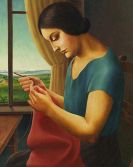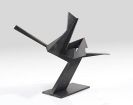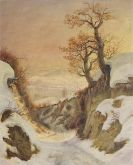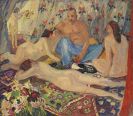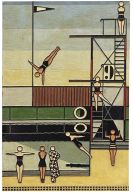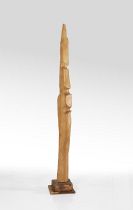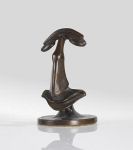
Harmen Meurs
Wangen
1891 -
Speude/Ermelo
1964
The Dutch painter Hermanus Meurs, alias Harmen, studied at the State School of Applied Arts and the Rijksakademie in Amsterdam from 1909 to 1911. At first he painted mainly still lifes, landscapes and people in a farming environment.
Several trips to France changed Meurs' style which now became influenced by Expressionism. Harmen Meurs joined the artist association "De Onafhankelijken" ("The Independents") in 1918, a group considered the Dutch equivalent to the "Societé des Artistes Indépendants" in Paris.
Harmen Meurs was one of the most important members - at times also the chairman - of this society until the mid 1930s. The "DADA" evening organised by "De Onafhankelijken" in 1922 with Kurt Schwitters and Theo van Doesburg caused quite a stir at the time.
Meurs resigned from his post as chairman of "De Onafhankelijken" in 1933. In the same year his works were rejected at the "Berliner Kunstausstellung" and his painting "Tijdebeeld 1933-34", depicting a group of Nazis ramming a swastika into a Jew's chest, was withdrawn from a show in Amsterdam for political reasons. Even "De Onafhankelijken" refused to include the artists works in their exhibitions and Meurs left the group in 1934.
Nevertheless, social subjects became increasingly important in Harmen Meurs' work. The artist left Amsterdam during the war and built a house near the town of Putten. His refusal to become a member of the "Reichskulturkammer" resulted in total isolation of the artist, who had previously enjoyed international attention. During the war he occupied himself with anti-war subjects, such as his series "Shot during the Escape".
After the end of the war Meurs spent some time travelling through France and Spain. There was a large retrospective exhibition of the artist's work in Rotterdam in 1953.
Harmen Meurs spent his last years in rural seclusion, working incessantly until his death in 1964.
Would you like to sell a work by Harmen Meurs?
Infos for seller
